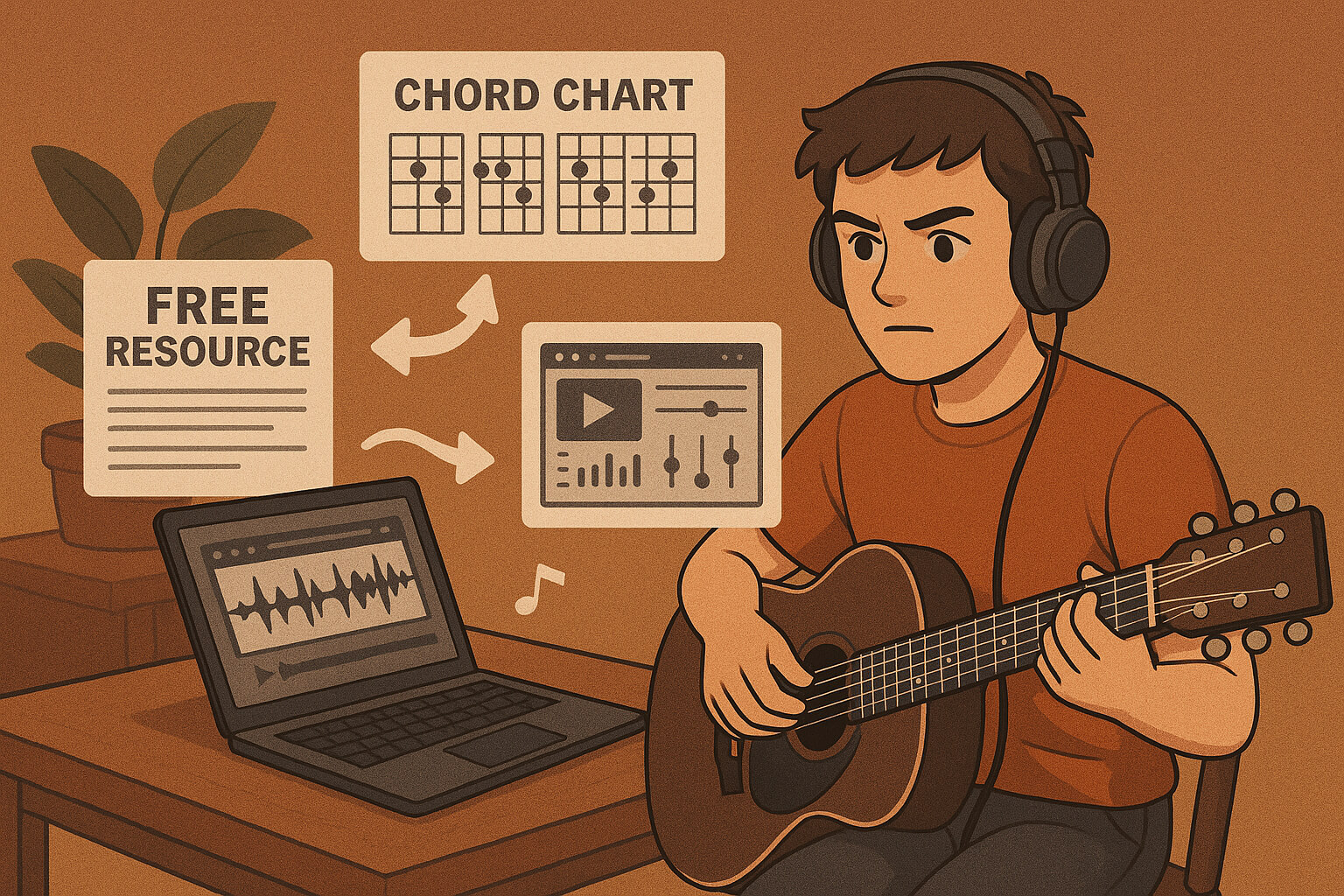August 04, 2025

Think learning music is only for those with big budgets? Think again! Thanks to the wealth of free resources online, you can learn any aspect of music — from playing instruments to mastering music theory and even creating your own tracks — without ever needing to pay for lessons.
Ready to dive in and become your own teacher? Here’s how to do it effectively, efficiently, and for free.
Start with a clear vision of what you want to accomplish. Setting specific goals makes your learning journey focused and intentional.
Ask yourself:
Once you’ve got a goal, you’ll know exactly what resources to focus on. For example, if you want to learn guitar chords, you don’t need to spend time learning advanced theory (unless you want to — no judgment!).
Tip: Write your goals down, and review them weekly to stay on track!
Thanks to the internet, free, high-quality music lessons are everywhere. Explore platforms offering structured lessons that can act like a personal teacher.
One of the best ways to develop musical intuition is by simply listening and playing along with your favorite songs. This approach helps you connect with music on a deeper level.
Here’s how to get started:
Pro Tip: Slow down the video or track if needed! There are apps that let you change speed without altering pitch.
A little downloadable help goes a long way. Free guides are a perfect way to supplement your learning.
Use these resources to build your foundation and practice independently. Remember: repetition is key!
Without a teacher, it’s easy to get lost in endless YouTube videos and tutorials. That’s why creating a consistent daily practice routine will make all the difference.
Consistency > Duration: 20–30 minutes a day is more effective than a single 2-hour session per week. Keep it regular!
Pro Tip: Use apps like TonedEar to do quick ear training during your routine.
Learning by watching is an underrated but incredibly powerful tool.
Pro Tip: Break down professional performances or covers — try mimicking small sections until you’ve got the feel down!
These tools and resources will help you progress faster by providing structure, inspiration, and accountability.
Being a self-taught musician doesn’t mean you’re on your own. You’re still part of a global community of learners, creators, and musicians sharing free resources, knowledge, and inspiration.
With the power of online tutorials, downloadable materials, and practice routines, you can build a personalized learning path that matches your pace and musical goals. And remember, you don’t need a teacher to have a clear plan — you can learn all the essentials and even discover new musical passions for free.
Self-teaching can give you the creative freedom to explore your music. So grab your instrument, hit play on a tutorial, and start making music today.
To add even more value, here are some extra tools and platforms for further learning:
Stay up to date with the latest tips, expert insights, product reviews, and step-by-step guides to help you grow, create, and succeed—no matter your industry or passion.